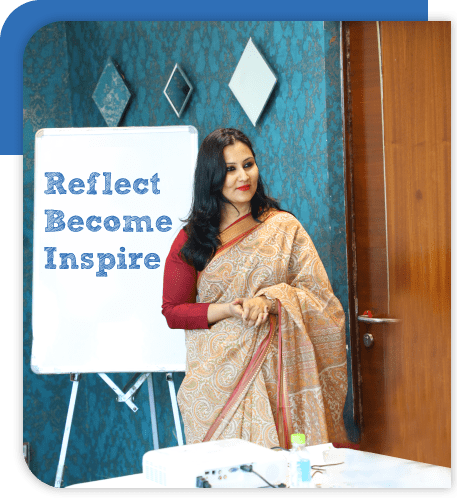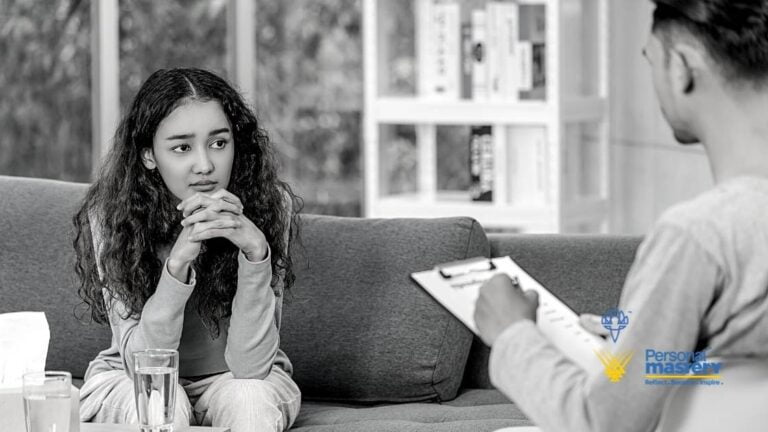
NEWSLETTER
It all begins with you.
*By subscribing you will receive information about how to change your mindset, remove limitations and develop unshakable confidence.

Founder-Personal Mastery

Share on social media
Problems are part of our daily lives from a very young age. And as people are very different from each other, the one aspect where we vary a lot is how we approach problems.
It is impossible to avoid them because they are inseparable from our existence. Learning how to solve problems is a lesson that we should all internalize and work on. The coaching sessions that we carry out at Personal Mastery are a learning and convincing mechanism that teaches us to overcome the obstacles that give us the feelings of negativity, lack of confidence, anger, and sadness since, on many occasions, we do not know how to make the right decisions.
So yes, coaching sessions can help us know how to solve problems in our life. Where there is a problem, there is undoubtedly more than one solution.
The key is to adapt and accept the circumstances in which we live. It has been shown that those who best interpret and handle and adapt to these (problematic) circumstances suffer less anxiety, sadness and stress, and deal earlier and better with the problems that shape those circumstances.
We will use Neuro-Linguistic Programming, which is nothing other than the ability we have to recognize our emotions and those of others and know how to manage them for our own benefit and to be able to react in the best way.
Our coaching sessions use different techniques to spur neuro-linguistic programming focused on knowing how to solve everything that does not allow us to advance. Some are:
Understand and accept the situation
Identify the expectations that we had created
180º visualization of our context and reality
Cognitive restructuring or interpretation of reality
But we want to focus on two specific techniques that we use in coaching sessions and attach special importance to.
Positive, neutral, or negative attitude; depending on what disposition we show to the problems, the resolution of them will be in one way or another, easier or not. We will see the problem as a block or as an opportunity.
We carry this orientation towards problems that determines the way we have to solve problems. Each one of us is defined by beliefs, assessments, and responses to certain negative situations.
In the same way, we are unique when facing these problems and looking for a solution to them.
This way of being produces emotional responses that can be an incentive to solve problems, or quite the opposite, a stone in the way that hinders the process of solving them.
In our coaching sessions at Personal Mastery, we delve into the patient’s profile regarding their ability to resolve conflicts. First, you have to identify and define it, and then, if it is prone to negativity and tends to block and not move forward, work on changing that behavior towards a more analytical, cerebral, and leisurely one.
We focus on a clear objective: to find the most effective solution or solutions to the problem through different actions or strategies that we carry out. We seek to spur the following skills in our client to know how to solve them:
Knowledge of the origin of the problem
Generation of alternative solutions
Evaluation of the best alternative
Decision making and execution
As you can see, it is a kind of phased process that this problem-solving technique proposes to us.
First, it calls us to recognize what causes a problem, which may be the situation itself, our disproportionate or wrong response to it, or the action of a third party involved.
Secondly, it directs us to decompose the situation into different parts with their particular solutions—partial and realistic solutions to a comprehensive problem.
And finally, we finish by analyzing the alternatives that we have before us and choosing the one that suits us best.
As you can see, the coaching sessions that we develop with our patients direct their steps to foster a cognitive and emotional methodology to shape their predisposition to problem-solving.
The coaching sessions help us determine the way forward for the client to know how to solve the problems that concern him. One must take these steps in the supervision and accompaniment of the Coach and those who are close to them in this delicate phase:
Honesty about the issues that concern us
What are the origins of these problems? Have we had something to do, or are they motivated by external elements?
Honesty about how we are, how we feel, and why they are affecting us
Are these problems the cause of my personal and/or professional unhappiness and/or dissatisfaction?
Are they as serious as I think? Maybe my perspective is not entirely correct, and its influence on my life is not so decisive.
A detailed description of each problem, with its cause or causes and its consequences so far
What do I want to happen with these problems? What should happen so that they will end? Is it in my hand, or do I need help?
List the solutions that come to mind
Think of other less orthodox methods.
Other people who can help us at work, friends, family, the Internet …
Dissect each solution. Is it achievable? Is it possible according to my means? How long will it take?
Select several possible solutions (if possible)
Choose one and try it as a solution to your problems.
Assess the results. Has the problem been resolved?
If not, try another solution from those chosen in the previous phase.
Discuss the result of the entire process with our Coach. Have we fulfilled our role in each phase?
Other troubleshooting techniques
Over the years, several techniques have been made public to find the key to solving problems. Already in 1971, D’Zurilla and Goldfried championed a bidirectional process composed of 5 phases:
Orientation towards the problem
Definition and formulation of the problem
Generation of solution alternatives
Decision making
Solution implementation and verification
It is also possible to face our problems through creativity. Yes, of creativity. Employ creative problem-solving techniques coined by Alex Faickney Osborn, promoter of the globalized concept of brainstorming, and Sidney Parnes. It’s based on:
List ideas without prejudging or analyzing them
Ask questions about problems to prompt creative responses
Avoid the implicit negativity by using the expression “Yes, and …” in the problem-solving process.
Do not answer with doubts and buts, but with an affirmative and a continuation of the proposed idea.
Another creative and reference in letters, Tim Hurson, has his own methodology for solving problems from another less homogeneous prism.
Ask what’s up
Ask what success is
Ask what the question is
Generate responses
Conceive the solution
Arrange the resources
On their own, these well-known troubleshooting techniques can be complex to execute without the proper help. For this reason, we believe that in the face of all these techniques, the Coach’s work is highly recommended to learn to execute each of the phases and channel the responses, stimuli, and doubts that they will generate in us.
Through our coaching sessions, we internalize, externalize, interpret the emotions and conclusions that these techniques leave us to know how to get the most out of them in our dealings with the problems in our life.
How to solve the problems that plague us is one of the great questions that people ask ourselves. There is no single answer, as no two people are the same. But yes, through coaching sessions focused on the management of our emotions, the development of our emotional intelligence, and a series of guidelines and analytical processes, we will be able to focus and deal with these situations in a much cleaner way, healthy and productive as most of us usually do. Remove the negativity inherent in this state to open our minds to a more straightforward and more effective process.
At some point in your life, you will become emotionally saturated at some point, and we believe that we can handle everything, but we cannot. You should not carry weights that may not be yours. They may have made you believe that they are yours. Take responsibility for your actions, not those of others. Only then will you be free and happy.
At Personal Mastery™, we can help you manage the problems that often block us to the point of affecting our entire lives. We are at your disposal through our website.

It all begins with you.
*By subscribing you will receive information about how to change your mindset, remove limitations and develop unshakable confidence.
support@personalmastery.in
Phone:- +91-9592877000
*Data will be stored according to privacy policy
support@personalmastery.in
Phone:- +91-9592877000
*Data will be stored according to privacy policy